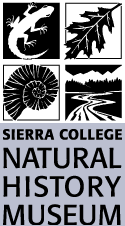Videos
The communication of science is more important today than ever. We are constantly inundated with scientific information, from the commercials we watch about new pharmaceuticals, to news reports about scientific findings. We need not only to be critical evaluators of that information, as reported in other articles in this edition, but we also need to be engaged enough to receive that information.
More often than not these days scientific information is communicated by those outside of science and even sometimes by those who would actively work to discredit scientific theories, like global climate change.
Why Be Boring?
Why is that the case? Well, the scientists who report their information tend to be incredibly boring, meaning that the public would prefer to get their information from other sources. Don’t think that I have something against scientists, I interact with them at scientific meetings all the time and I am one and scientists do tend to portray scientific information in an engaging way to other scientists but the problem is that those scientists only become engaged after years of training in how to be engaged by that information. It doesn’t usually come naturally.
Randy Olson discussed in his article how scientists need to be better communicators if we are going to engage the public enough for them to receive scientific information and some in the scientific community are finally getting the point.
Two Engaging Videos
Here we present two YouTube videos on two different types of scientific information: the harms of the use of plastic bags, and water bottles. The video on the use of plastic bags comes from Heal the Bay (http://www.healthebay.org/) and is a cleaver way of presenting the realities of the use of plastic grocery bags. The other video is from the Story of Stuff Project (http://www.storyofstuff.com/) and presents data on the consequences of the use of bottled water.
As you watch these videos realize that both of these videos are presenting scientific data but in a way that makes them engaging. They are still communicating the same information as a dry video or presentation on the subject but in a way that makes people want to watch. If more scientists caught on to this way of thinking, I think we just might be on the way to a more educated public.
